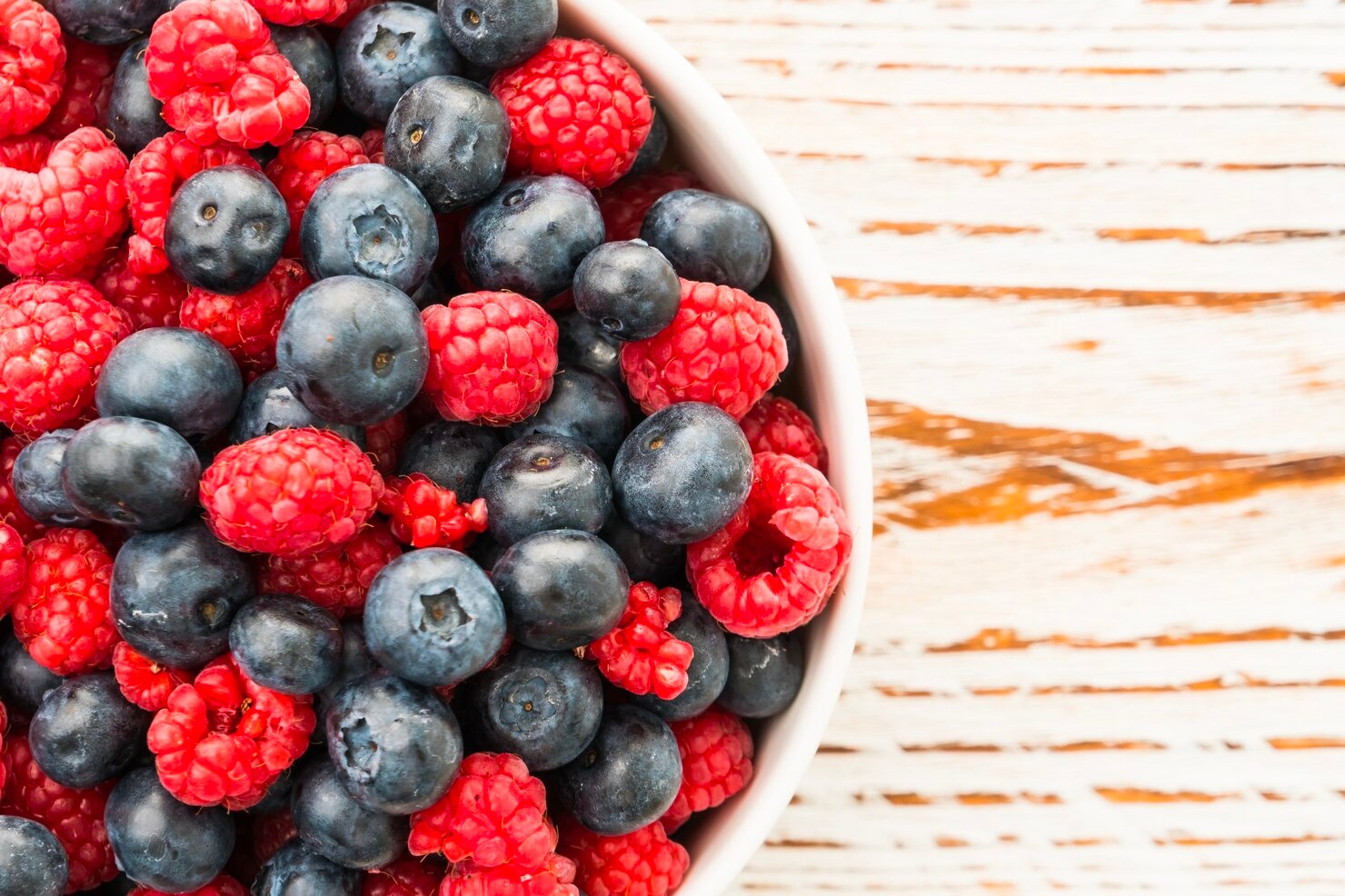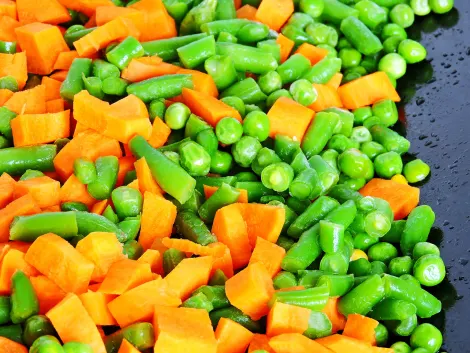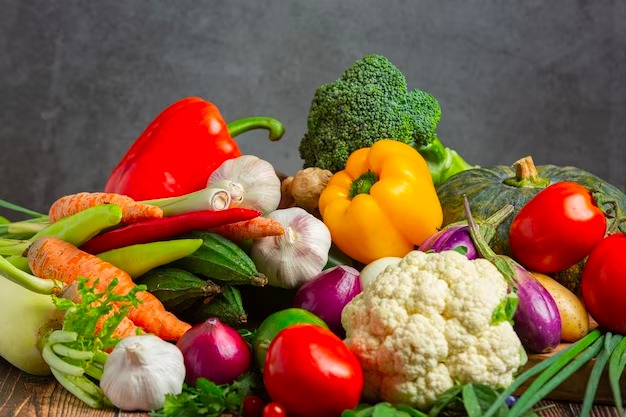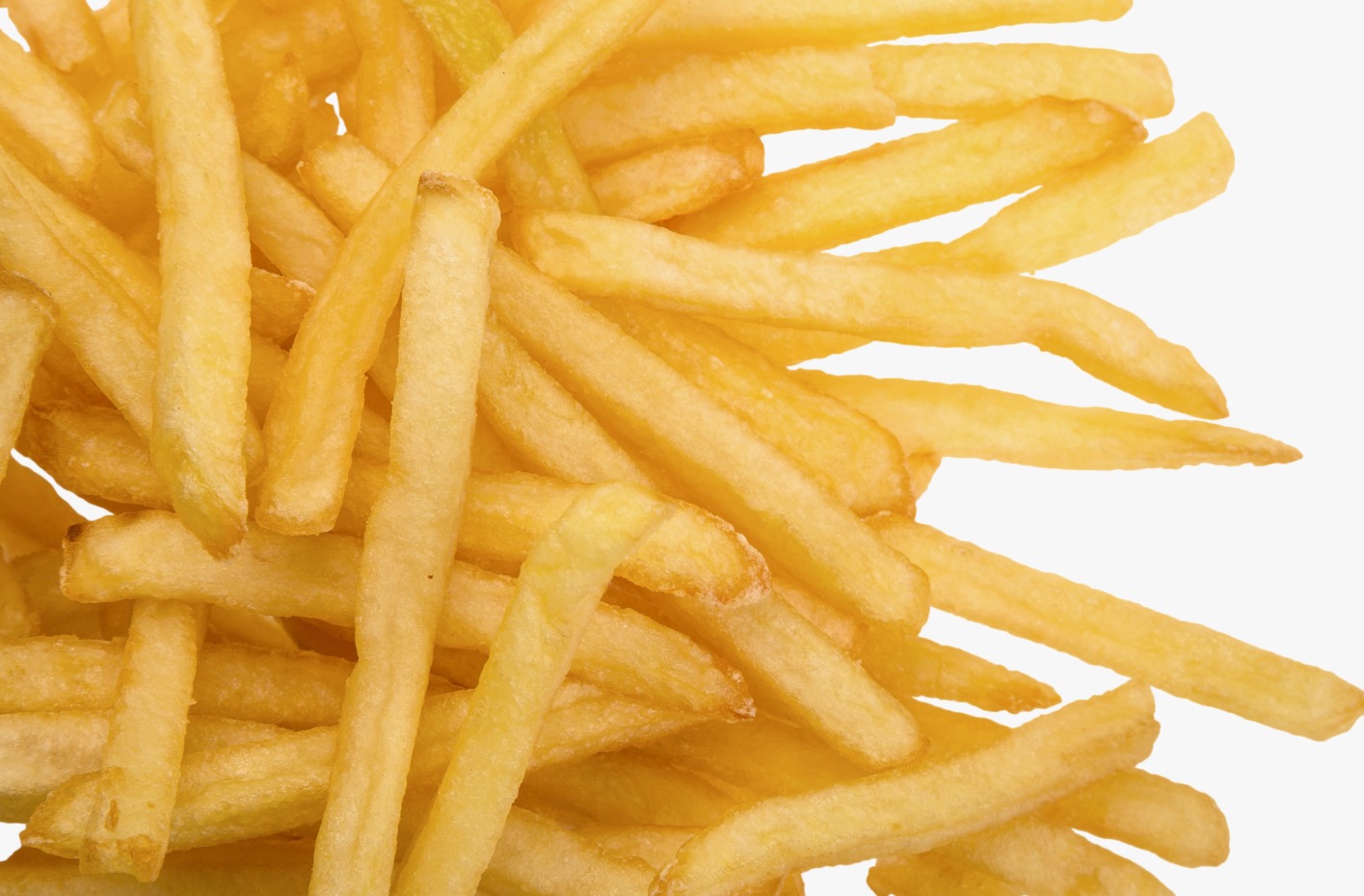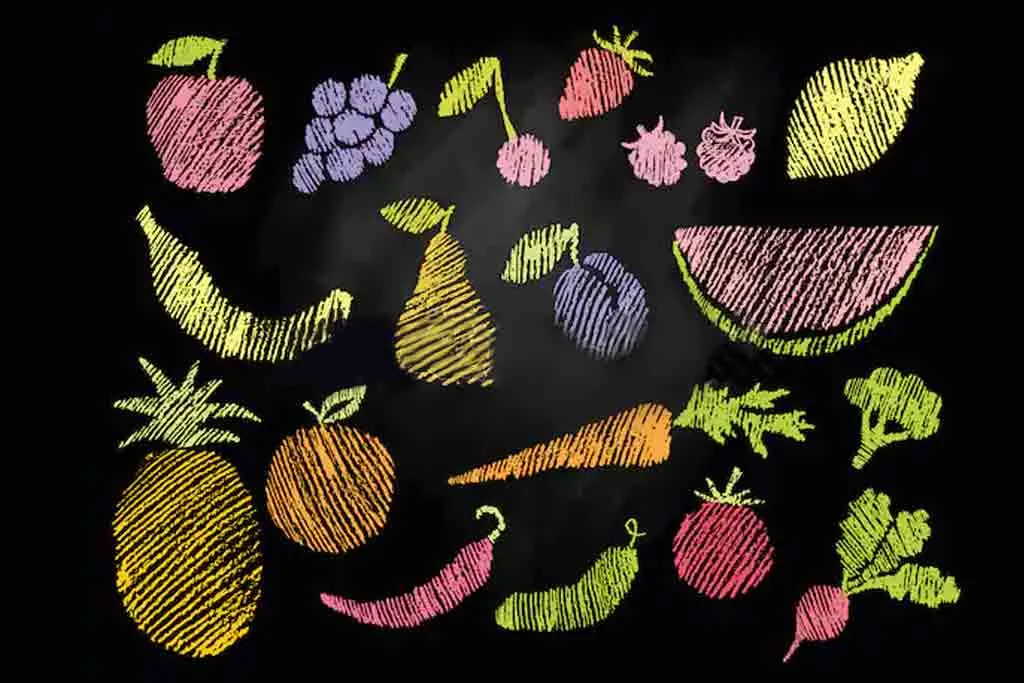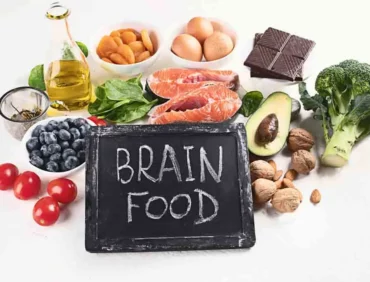Niebieski/Fioletowy:
Różne owoce i warzywa, takie jak bakłażan, borówki, śliwki czy rodzynki, mogą mieć odcień od niebieskiego do fioletowego. Kolor niebieski/fioletowy jest wynikiem obecności w tych produktach fitoskładników zwanych antocyjanami (flawonoidy). Rośliny produkują te składniki, aby chronić się przed atakami owadów i uszkodzeniami spowodowanymi przez promieniowanie UV
Zielony:
Szpinak, brokuły, trawa pszeniczna, jarmuż i brukselka mają zielony kolor ze względu na obecność zielonego pigmentu, czyli chlorofilu. Wiadomo, że pigment ten pochłania światło w czerwonej i niebieskiej części widma światła i odbija pozostałą część, która jest głównie zielona
Czerwony:
Czerwony kolor w niektórych owocach i warzywach jest wynikiem obecności likopenu, który należy do grupy karotenoidów. Tak więc pomidory, jabłka, truskawki, buraki i granaty mają czerwony kolor, ponieważ są bogate w likopen. Odkryto, że likopen zmniejsza ryzyko zachorowania na raka prostaty, trzustki, a w pewnym stopniu także żołądka.
Żółty/Pomarańczowy:
Żółte i pomarańczowe owoce i warzywa zawdzięczają swój kolor luteinie i zeaksantynie, czyli kolejnym karotenoidom. Zawierają one również przeciwutleniacze, takie jak witamina A i C. Pomarańcze, mango, żółta papryka, cytryny, ananasy, dynia mają duże ilości tych korzystnych substancji.
Biały:
Owoce i warzywa o białym kolorze stanowią ważne źródło kluczowych składników odżywczych (zwłaszcza błonnika, potasu i magnezu) oraz innych mikroelementów. Korzyści zdrowotne wynikające z białej żywności nie powinny być niedoceniane i mogą zwiększyć niedobór składników odżywczych w naszej diecie.
Owoce i warzywa mają swój charakterystyczny kolor ze względu na obecność fitozwiązków o zróżnicowanej naturze. Różne składniki odżywcze występują w różnych ilościach w różnych produktach spożywczych. Powinieneś upewnić się, że Twoja codzienna dieta zawiera jak najwięcej kolorowych owoców i warzyw, aby uzyskać kombinację efektów zdrowotnych.

